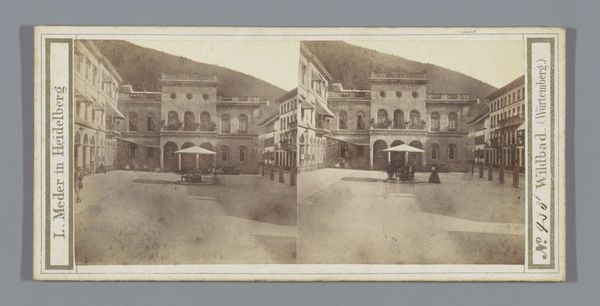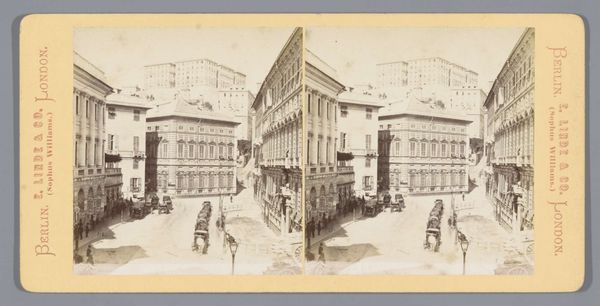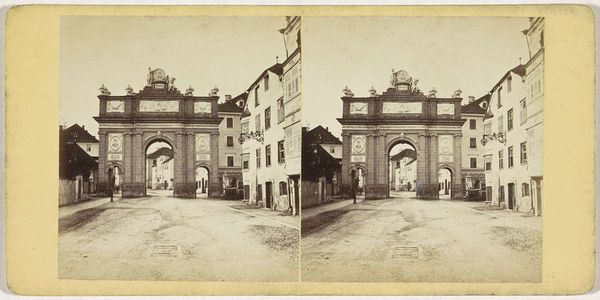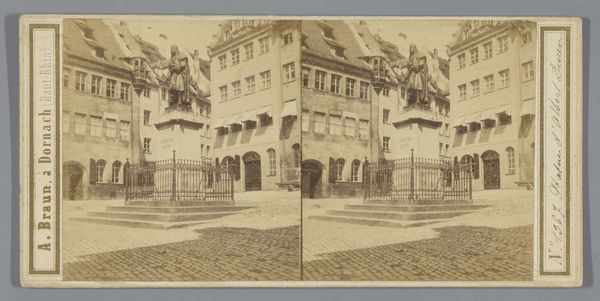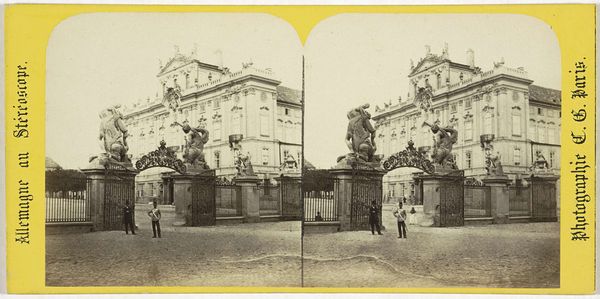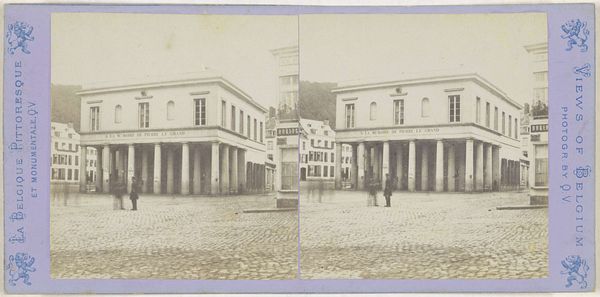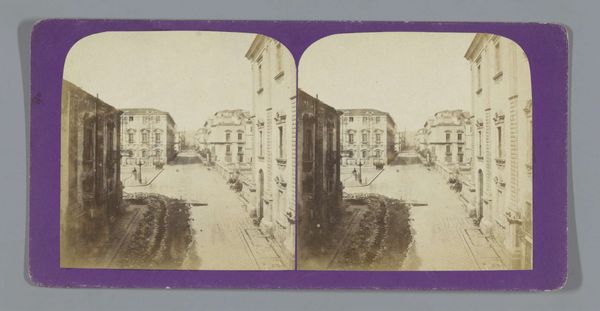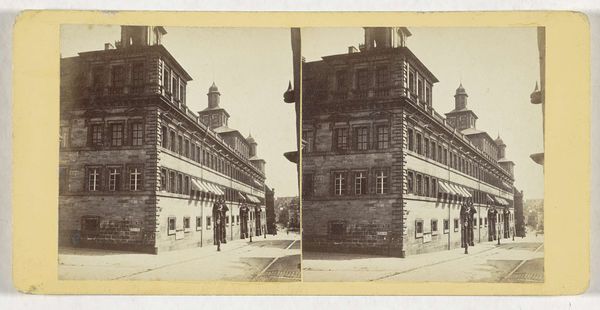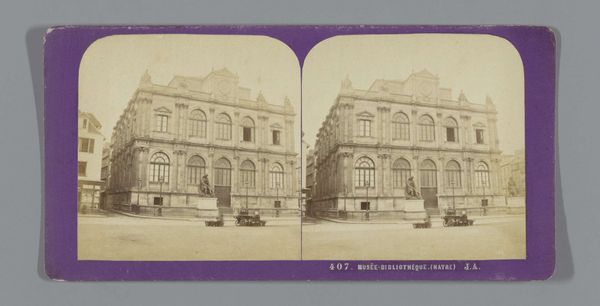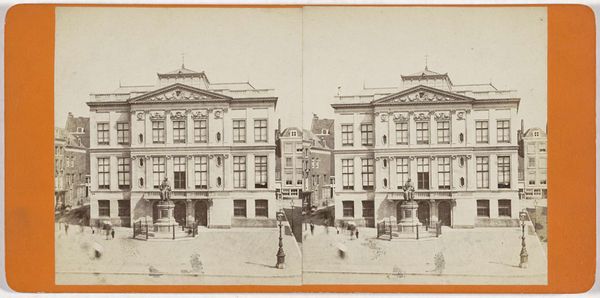
Dimensions: height 87 mm, width 177 mm
Copyright: Rijks Museum: Open Domain
Curator: At first glance, I perceive a muted formality, a structured serenity that is almost otherworldly, existing in a sepia dreamscape. Editor: Indeed. Here we have "Zuidzijde van de triomfboog in Innsbruck" or "South Side of the Triumphal Arch in Innsbruck," an albumen print from around 1868-1890 by Johann Friedrich Stiehm. It is a quintessential Neoclassical photograph showcasing this important structure. What resonates is how the architecture becomes a reflection of power during a specific period of Austro-Hungarian history. Curator: The severity in Stiehm’s architectural framing certainly evokes this sense of imperial authority. Note how the cubic structure in the foreground almost acts as an aesthetic barrier that mirrors the structure of power itself. But consider, who was power for? Editor: Precisely. And to look at that frontality more formally, note the deliberate compositional use of perspective. It really does compress depth to give a planar effect. And the tones! Such restricted tonality suggests a muted elegance, despite the structural weight of the buildings. Curator: Muted elegance indeed masks so much in that period. Think of the rapidly industrializing and shifting social and political tensions of that era; this is not captured at first sight but is nevertheless subtly interwoven in Stiehm’s work, showing that urban transformation in 19th century Innsbruck. This gate then served to manage access but also regulate which populations got access to visibility in these civic spaces. Editor: I appreciate the layering that exists as one deconstructs these elements of photographic representation. It is a document and art form. And the triumphal arch has the symbolic purpose and the aesthetic realization through symmetry, line, and contrast. Stiehm masterfully captured all those elements through his chosen printing technique of that time. Curator: That mastery is undeniably bound to both celebrate, even perhaps idealize, certain ideologies. This photograph now can speak to critical reevaluation of our place within these inherited power dynamics and constructed heritage sites that need to be considered today. Editor: A fitting way to reflect on our looking at this image.
Comments
No comments
Be the first to comment and join the conversation on the ultimate creative platform.
